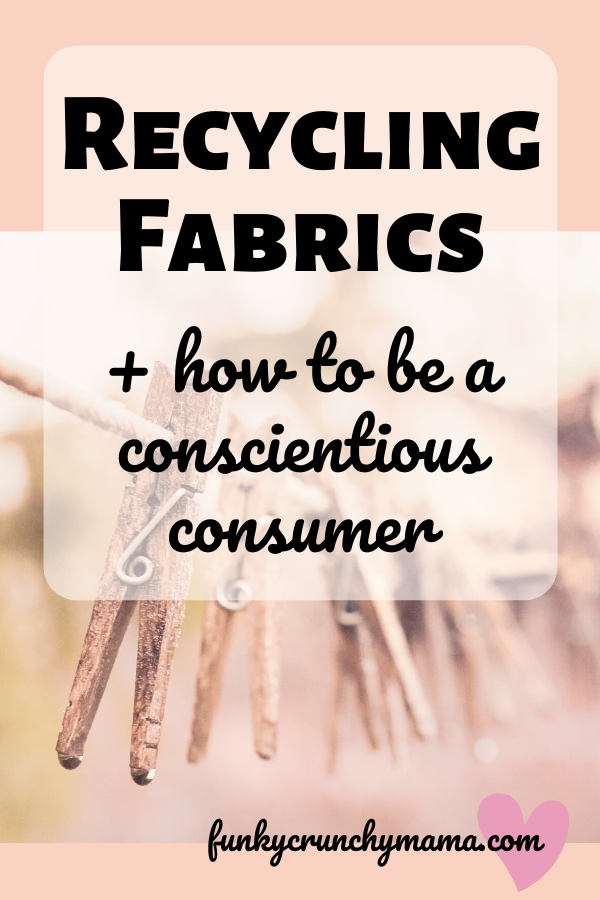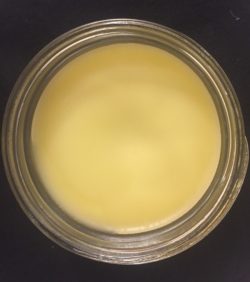Every year our local history museum holds a folk & fiber fest in February. It’s one of my favorite annual events, full of vendors and demonstrators, activities for kids — all with some of my favorite media woven amongst their wonderful exhibits. I have a whole post on what I love about this festival (and the museum itself), but one of the things I learned at the festival this year was about sustainability and fabrics recycling.
This post contains affiliate links.
This year, the museum hosted several new individuals, expanding on their theme. One new facet was a panel of representatives from around the community with a deeper knowledge of fast fashion and the impact it has on the environment.
One of these individuals represented a local organization that supports individuals struggling with homelessness with its secondhand operation. The organization is fully submerged in the recycling industry — recycling over 10 million pounds of “stuff” (metal, cardboard, fabrics, and e-waste) since 2003.
The gentleman participating in the discussion was such a wealth of information, but one of the most valuable points I took away from him was that fabrics, despite their condition, can be recycled.
Specifically, I was most curious about the oldest, grungiest garments in my wardrobe — socks with holes, yard work clothes, the pajamas I’ve literally had for 20 years — and scraps from crafting. Turns out, they’re all sent to a grater and turned into random things like insulation.
Who knew?
So, what’s my point?
My point is this: Keep a fabrics recycling bin and recycle everything you can.
How Do I Go About Donating These Items?
The best thing to do if you’re donating un-resellables is to put these items in a separate bag marked recycle. By doing so, you’re saving storeroom staff from having to sort through it.
If you’re anything like me, you always have a box collecting things for donation anyway. What’s another box next to it? Or a small basket for scraps next to your sewing machine? Think of all the material you’d be saving from the landfill if everyone recycled their old socks and well-loved tees!
Where Can I Recycle My Clothes?
Many thrift stores participate in fabrics recycling.
While the person that I mentioned above was involved with a local organization, large nationwide stores like Goodwill and Salvation Army will gladly accept your castaways. Drop them off wherever is most convenient for you!
Other Things to Consider as a Consumer
Of course, fiber recycling is a final place for your old clothes. Ultimately, if you want to be a more conscientious consumer, there are some other things to consider.
Material
The material out of which your clothing is made should be a major consideration. First of all, many fabrics are made from synthetic materials that can take as long as other plastics to biodegrade. In some instances, these materials improve a product’s durability and hence, longevity (like socks), but in most instances, they’re simply an inexpensive alternative to a natural fiber.
Natural fibers not only biodegrade more quickly, but can even be composted, if that service is available in your area. Bonus if the fibers are locally sourced!
Quality
The quality of clothing you purchase should also be something you consider. If you’re buying a $20 dress for a New Year’s Eve party, will you ever wear it again? Will it last more than one night?
Believe it or not, some organizations that receive clothing donations are so overwhelmed that they don’t even have a chance to sort through them all and send them directly to the grater, despite condition.
If you want to buy something new for limited wear, consider new to you (thrifting) so you’re not contributing to the cycle.
Manufacturing Location
The place that your products were manufactured can add a substantial footprint. Fabric dying and leather tanning can be toxic processes full of harsh chemicals that not only damage the environment, but the health of the facilities’ employees, if not properly regulated.
Also consider transport of the product from the manufacturing site to you, the consumer. Try to buy ethically sourced, preferably local products if you can afford to do so. Check eBay for high-end, quality products that are long-term investments (in Wisconsin, it’s winter boots). You’ll sometimes be able to find these items for less.
Be an Advocate!
Don’t forget the importance of speaking up! Tell your friends and family to pause before they purchase — do they really need it? Request non-material or ethically sourced items as gifts, encourage secondhand, and don’t forget to spread the good word on fabrics recycling.
What’s your favorite way to save the planet in fibers? Do you have a favorite brand that you love to support? Please tell me about it in the comments below so I can support them, too!
— Funky Crunchy Mama
| |
|---|---|
| |








One thought on “Recycling Fabrics + How to Be a Conscientious Consumer”